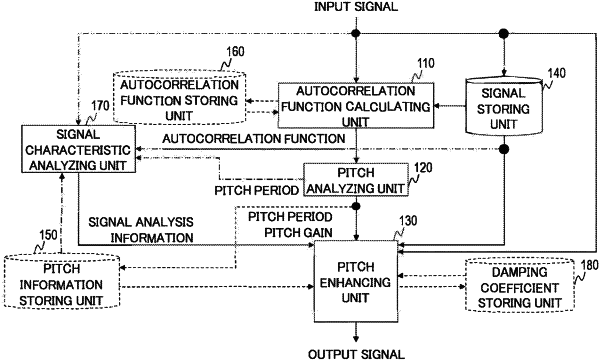| CPC G10L 21/0364 (2013.01) [G10L 21/0332 (2013.01); G10L 25/90 (2013.01)] | 6 Claims |

|
1. A pitch emphasis apparatus that obtains an output signal having little unnaturalness to listeners by executing pitch enhancement processing on each of time segments of an input signal, the input signal being an audio signal, the apparatus comprising:
a pitch enhancing unit that carries out the following as the pitch enhancement processing:
for a time segment in which a spectral envelope of the signal has been determined to be flat, obtaining an output signal for each of times in the time segment, the output signal being a signal including a signal obtained by adding (1) a signal obtained by multiplying the signal of a time n−T0, further in the past than a time n by a number of samples T0 corresponding to a pitch period of the time segment, a pitch gain σ0 of the time segment, a predetermined constant B0, and a value greater than 0 and less than 1, to (2) the signal of the time n, and
for a time segment in which a spectral envelope of the signal has been determined not to be flat, obtaining an output signal for each of times in the time segment, the output signal being a signal including a signal obtained by adding (1) a signal obtained by multiplying the signal of a time n−T0, further in the past than a time n by the number of samples T0 corresponding to the pitch period of the time segment, the pitch gain σ0 of the time segment, and the predetermined constant B0, to (2) the signal of the time n.
|